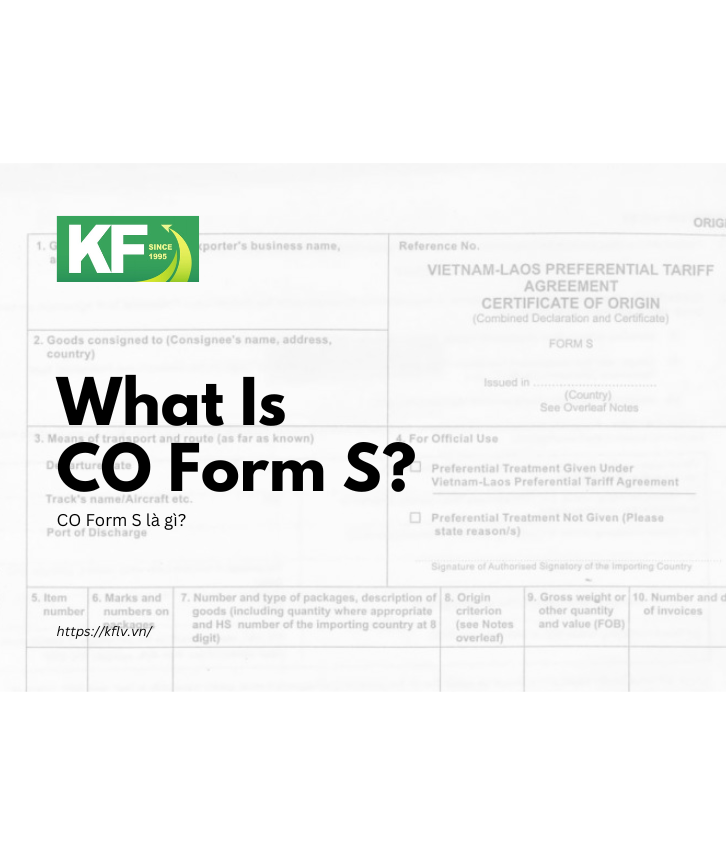What is CTC? The Tariff Classification Change Rule in Determining Origin
In the field of import-export, determining the origin of goods is a key factor for businesses to benefit from preferential tariffs under Free Trade Agreements (FTAs). One of the most commonly applied rules is CTC – Change in Tariff Classification.
Definition of the CTC Rule
CTC (Change in Tariff Classification) is an origin rule that considers a product as originating if its HS code (Harmonized System code) changes after the production or processing process, compared to the HS code of non-originating materials.
This rule applies to non-originating materials and requires that their HS codes shift at different levels compared to the finished product: Chapter level (2 digits), Heading level (4 digits), or Subheading level (6 digits).
>> Read More: What is an HS Code? How to Look Up HS Codes in Logistics
When is the CTC rule applied?
Businesses typically apply the CTC rule when:
- They are unable to meet the Regional Value Content (RVC) requirement.
- The agreement does not specify a Product Specific Rule (PSR) for that item.
- CTC is commonly used in FTAs such as ATIGA, EVFTA, and CPTPP.
Levels of HS Code Changes in CTC
Change in Chapter – CC

Change in Chapter – CC
- Requires a change in the first two digits of the HS code.
- Applied when materials and the final product fall under different chapters.
Example: Fresh meat (Chapter 02) → Processed and canned (Chapter 16) → Meets the CC criterion.

Change in Tariff Heading – CTH

Change in Tariff Heading – CTH
- Requires a change in the first four digits of the HS code.
- This is a common requirement in many FTAs.
Example: Rolled steel (HS code: 7208) → Rolled into sheets (HS code: 7210) → Meets the CTH criterion.

Change in Tariff Subheading – CTSH

Change in Tariff Subheading – CTSH
- Requires a change in the first six digits of the HS code.
- Usually applied when a deeper level of processing is involved.
Example: Whole pepper (0904.11.00) → Ground pepper (0904.12.00) → Meets the CTSH criterion.

Pros and Cons of the CTC Rule
Pros:
- Easy to verify and transparent: Origin can be clearly determined based on HS codes.
- Suitable for many manufacturing industries where processing changes the essential nature of the product.
Cons:
- Can be complex for products made with multiple components.
- Requires precise HS classification for both finished goods and input materials.
Commonly Used Terms
| Abbreviation | English Term | Vietnamese Meaning |
| CTC | Change in Tariff Classification | Quy tắc chuyển đổi mã HS |
| CTH | Change in Tariff Heading | Chuyển đổi nhóm mã HS (4 số) |
| CTSH | Change in Tariff Subheading | Chuyển đổi phân nhóm mã HS (6 số) |
| CC | Change in Chapter | Chuyển đổi chương mã HS (2 số) |
| C/O | Certificate of Origin | Giấy chứng nhận xuất xứ |
The CTC rule plays a vital role in determining the origin of goods to enjoy preferential tariffs under FTAs such as CPTPP, EVFTA, and ATIGA. Businesses should clearly understand the different levels of HS code changes (CC, CTH, CTSH), trace the origin of their materials, and classify HS codes accurately to apply this rule effectively.
If you’re looking for consulting services on origin determination or support with C/O certification, King Freight Logistics Vietnam (KFLV) is ready to accompany and support Vietnamese businesses on their journey of international trade integration.
Need guidance on product origin and how to effectively apply the CTC rule? Contact our hotline at +84 (0) 938 188 796 today!






Written bykflv.vn
Other activities


Other news

CO Form S (Certificate of Origin – Form S) is a preferential certificate of origin issued for goods exported from Vietnam to Laos. It enables Vietnamese exporters to enjoy special tariff preferences under the Vietnam–Laos Bilateral Trade Agreement. This article explains what CO Form S is, its purpose, documentation requirements, and application procedure — along […]

